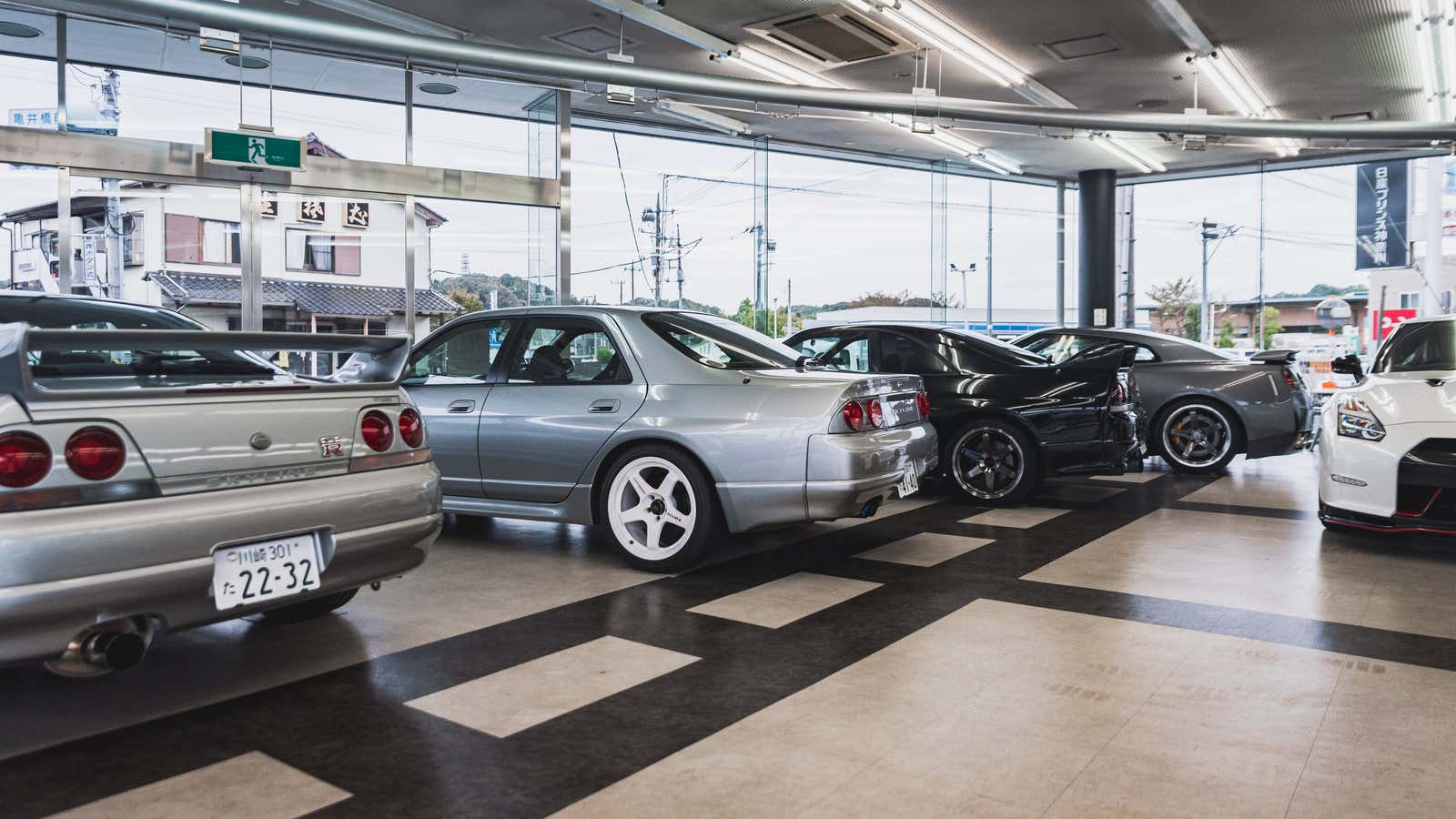Being in the export and import business in Japan pays off. As sketchy as that might sound, Japan exports a little over a million used cars every year. Most of these cars are pretty unremarkable, bound for emerging markets and New Zealand. But a small percentage of cars leaving Japan every year are held dear by many enthusiasts in the country.
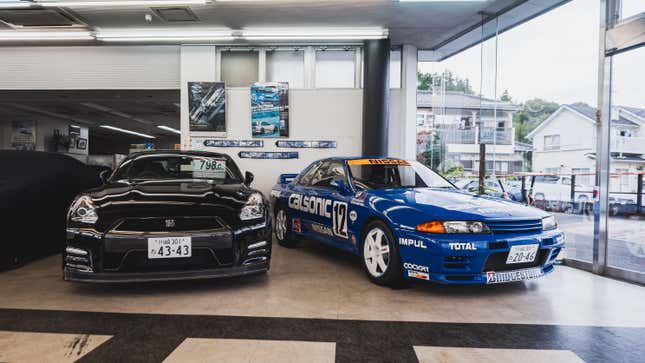
In recent years, no thanks to the sudden availability of interesting Bubble Era and Gran Turismo generation cars being legally available in the United States, there’s been a mass exodus of iconic cars from the domestic market. Cars such as the Mazda RX-7, Toyota Supra, and most significantly the Nissan Skyline GT-R.
While other Japanese sports cars were exported overseas, the Skyline GT-R was always kept as a Japanese market exclusive. Sure, a few found their way to other right-hand drive markets such as the United Kingdom, Hong Kong, Australia, New Zealand, Singapore, and Malaysia but for the most part, the vast majority of Skylines have remained in Japan. That is until the 25-year rule opened up the R32 to the American market in 2014. Now, it’s the turn of the R33 and the R34 to become legal in a few years though that’s already made its way to Canada.
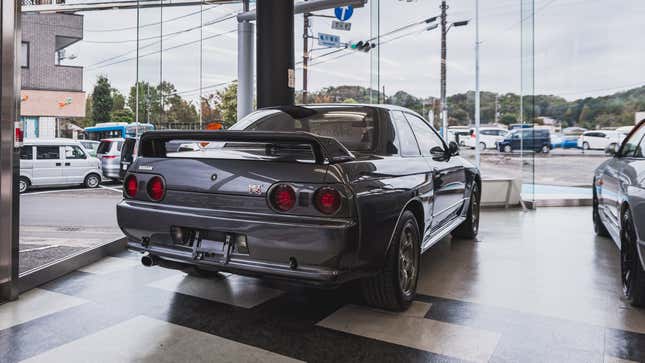
In response to this, there’s a movement in Japan amongst specialist shops to keep GT-Rs within home shores in an effort to stabilize prices for local buyers.
Specialist shops like R Best in the outskirts of Tokyo want to keep GT-Rs in Japan. They don’t bother trying to sell or deal with foreigners, as they made clear to me on a recent visit I made to the shop.
“We don’t have the resources to deal with English speakers,” was how they put it. It doesn’t seem like they want to rectify this problem either. They’re just not motivated to sell to foreigners. Speaking to Naoji Matsumoto, salesman at R Best, he believes “the average middle-class worker should be able to afford a GT-R.” But given the current prices for R32, R33, and especially the R34, that’s not the case anymore.
The GT-R is an iconic car, a hero for those who only saw it from afar, but they’re still just cars. That we remember them as giant-killers reminds us also of their intended market; they were high-tech sleds meant for the upper reaches of the middle class. The way GT-Rs are being (or will soon be) exported is causing scarcity in Japan, pushing prices up to levels that don’t match the GT-R’s place. The catalyst for this movement was when the R34 broke the 10 million yen mark (about $100,000) a couple years ago.
Interestingly, not ever GT-R is commanding a premium. The 21st-century generation is still falling to become a performance bargain. Matsumoto-san said “R35 prices aren’t going up,” the one they had in their shop was the same price as the R32 and R33. He did also say that along with the ‘90s era GT-Rs, “manual S15 Silvias are also increasing,” another draw from JDM-starved Americans just waiting for these cars to hit the 25-year mark.
The shop isn’t marveling at these prices. Matsumoto-san was concerned that their market and their cars are slipping away from them. As an example of how ridiculous prices have become, he told us that just last week they sold an ultra-rare 400R for “three times what it cost new.” Bear in mind when the 400R was new in 1996 it had a ¥12,000,000 ($110,000) starting price.
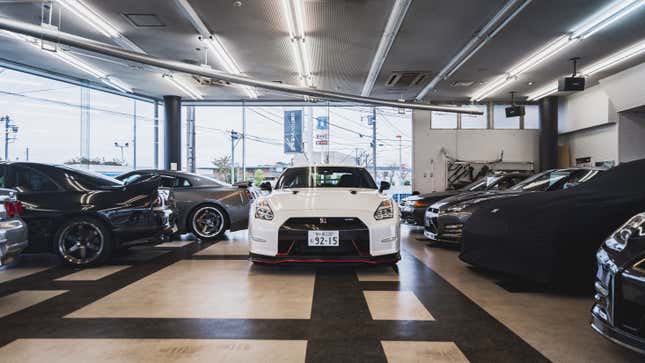
Shops like R Best are owned and operated by hardcore fans and aren’t indicative of the general buying experience in Japan. It’s interesting to hear businesses not chasing profit or capitalizing on the upward trend on the values of these cars.
It’d be easy for them to sell their pristine inventory to buyers overseas at a high premium compared to other shops, but they don’t. They’re sticking to their stance of only selling their inventory domestically. You might not agree with this decision, but I respect them for doing it nevertheless.
Fret not, as there’s no shortage of brokers, dealers, and auction sites that’ll happily sell you a GT-R because hey, greed is good. But if you want one from a trusted specialist shop like them you’ll have a hard time convincing them to let one of their stock cars go if you’re a foreigner. Certainly, that’s what I found at R Best. They said they preferred to trade cars between customers privately to avoid speculators. It’s also in their benefit to keep cars here as they service GT-Rs too and if they all leave they’ll be left with nothing to work on.
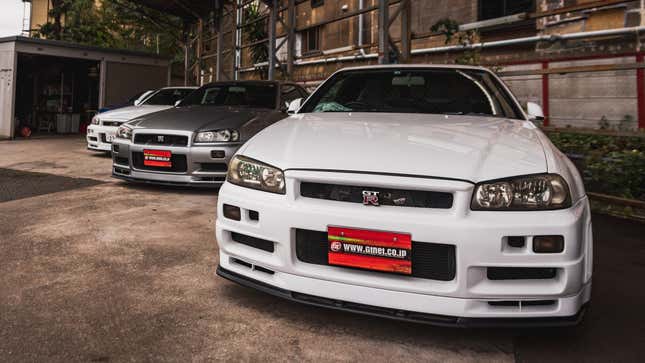
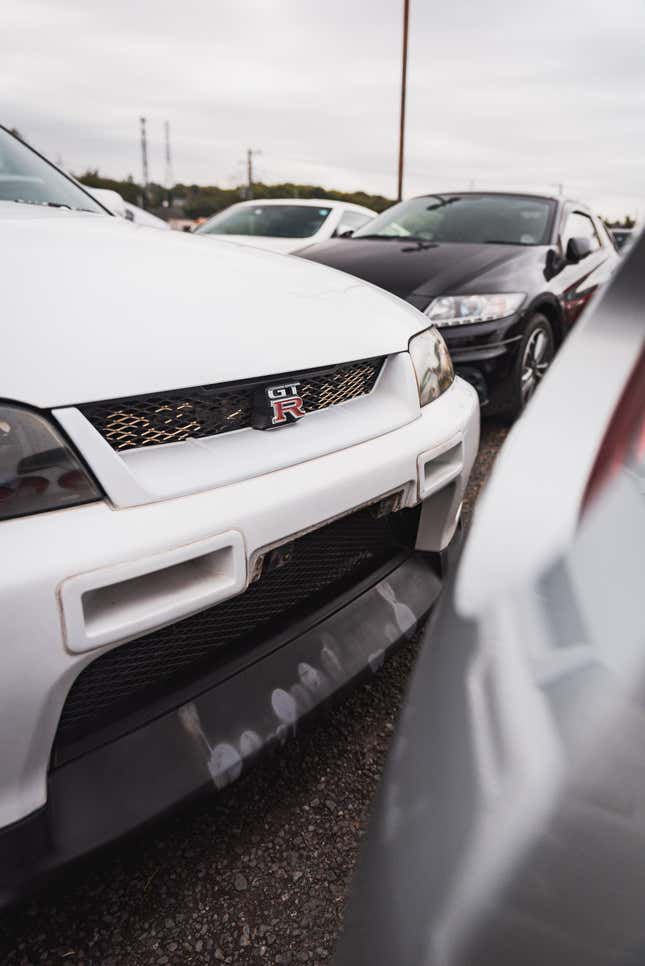
But R Best isn’t an outlier; other specialist shops share its sentiment of not dealing or exporting cars overseas. I also went to GTNet, a dealer with one of the most mouthwatering inventory of JDM sports cars around, and got the same feeling about exporting cars out of Japan. The sales staff there made it clear they had no interest in exporting cars or selling to foreigners. Their cars weren’t even in the same pristine condition as R Best yet they had the same feelings about them leaving the Japanese market.
With these guys, I got the feeling they didn’t care much if say, a Toyota 86 or an S2000 got exported, but were more cautious about the GT-R.
It becomes a vicious cycle as the cars that leave Japan bought through auctions aren’t the best examples. The ones that do stay are, but because they’re the best examples, they command a higher asking price.
That’s not to say the Skyline GT-R is becoming an endangered species on Japanese roads. The most recent R’s Meeting at Fuji Speedway was proof there’s still plenty around with more than 2000 showing up to the event filling almost all of Fuji Speedway’s car parks. But there is a stronger effort, more so recently, to stabilize the GT-R market. It’s getting out of hand.
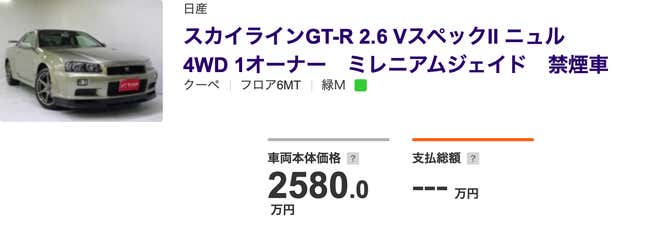
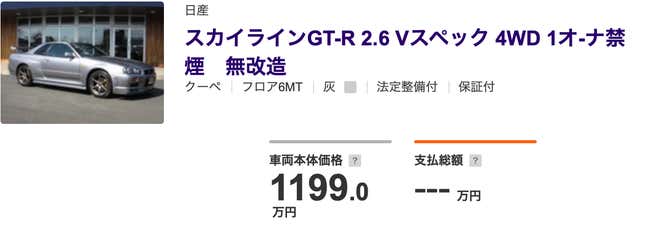


A quick search on Japan’s online used car websites can show how ridiculous the prices for these cars have become with many examples of R32, R33, and R34s with prices well above the $50,000 mark. Or in other words, more than what it’ll cost you to get a used example of the modern R35.
We could argue for days about the differences between the ’90s GT-Rs versus the modern GT-R, but the fact of the matter is you could have all the modern performance of the R35 for around the same price as a 25-year-old car and people are still clamoring for older models, even if that means some sketchy modifications and an even dodgier history. Clean, low mileage examples of both the R32 and R34 have gone stratospheric. There are over a dozen R34s listed on a Japanese used car site with asking prices above $100,000. Low mileage R32s aren’t far behind.


At R Best the difference between a slightly modified R33 V-Spec and a more modified R33 V-Spec with lower miles was around $18,000. The demand for stock (or as close to stock condition as possible) GT-Rs is at an all time high. Collectors and ill-advised Paul Walker wannabes are gobbling up these cars in an attempt to jump on the bandwagon before prices get even more ridiculous. We’re only in the lead up to the R34’s 25-year break.
When Best Heritage, Japan’s take on a high-end RM Sotheby’s style auction house, had an auction at this year’s Tokyo Auto Salon it made headlines by selling a mint condition original R34 Skyline GT-R V-Spec II Nur for a whopping ¥24 million ($220,000), something had to be done.
Hearing all this was news to me. I’d never seen or heard of dealers being so passionate about keeping a particular car in Japan and this is only for Skyline GT-Rs in the three years I’ve been in Japan. That’s not to mention the NSX specialists who might be as unwilling to let go of NSX-Rs despite their even more ridiculous asking price (NA2Rs are now trading for in excess of $270,000) or early Mitsubishi Evos, another car Americans never got but are now able to import.
Not all GT-R purchase stories are as grim. Jason Lowe (@yyzcurator) from Toronto was able to scoop up an Autech R33 GT-R sedan from TopRank and an R34 GT-R from CraftSports last year (thanks to Canada’s 15-year import rule) from two dealers without any issues. They assisted him throughout the entire purchasing deal from buying the car and exporting it to him in Canada.
Jason said he contacted the dealers beforehand and knew which car he wanted to get. There are ways around it like using services from brokering companies such as TPE Japan who can buy the car as a “Japanese buyer” then export the car overseas on your behalf.
The car market right now is on edge and there’ll be a correction in prices soon. But nostalgia and hype for these cars are still fresh. They’re still making Fast and Furious movies and Gran Turismo games; we’re only in the final years as the forbidden fruit for many Americans. I see no sign of the thirst for GT-Rs slowing down.
But know that there will be at least a few small shops clinging on to their inventory while everyone else tries to seize the momentum and capitalize on the behemoth that is Godzilla.
